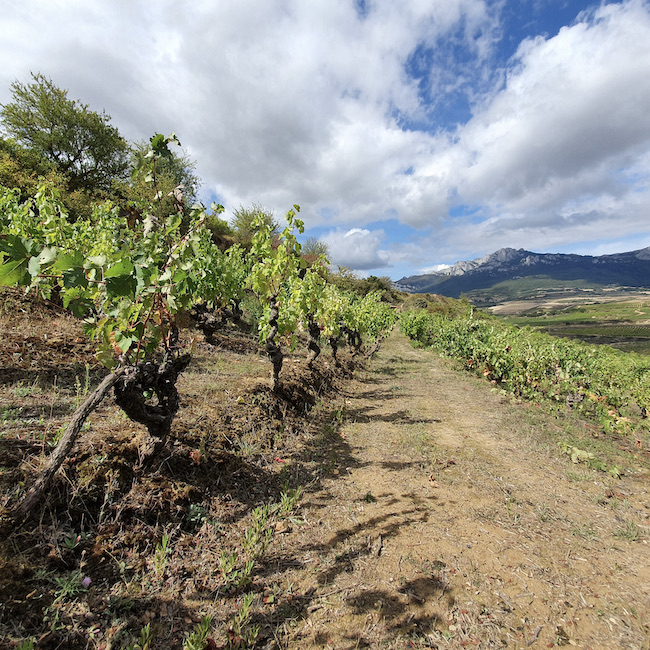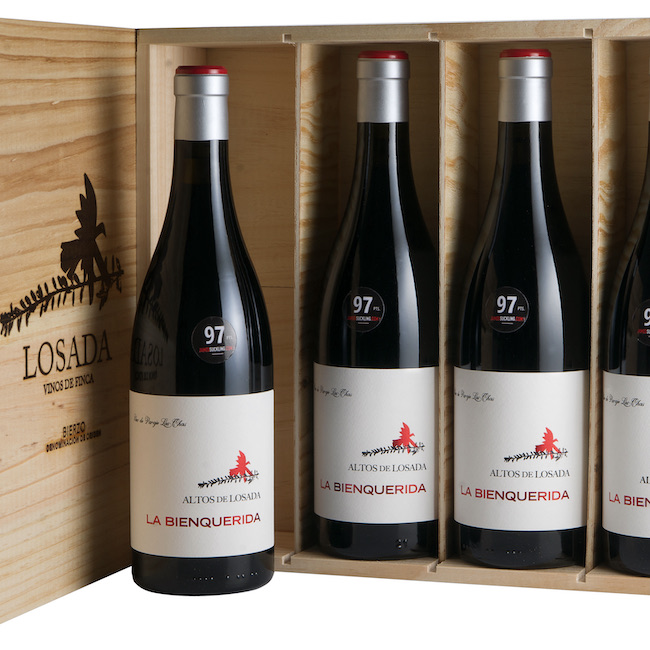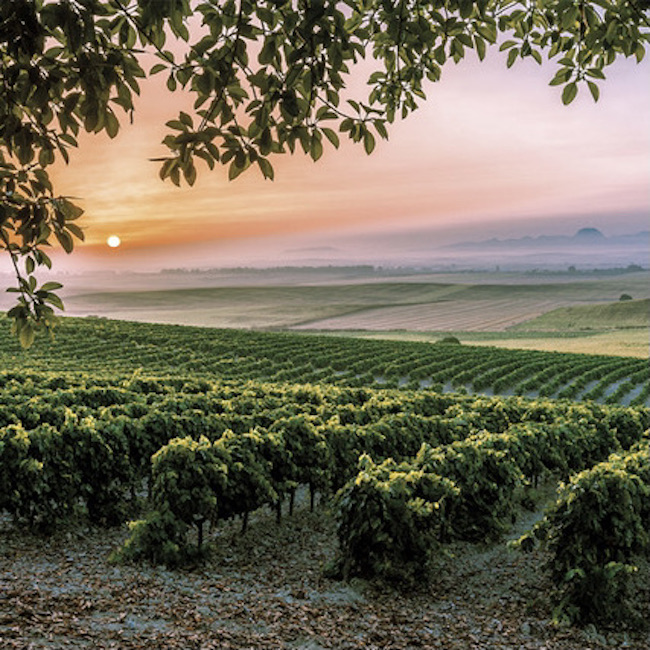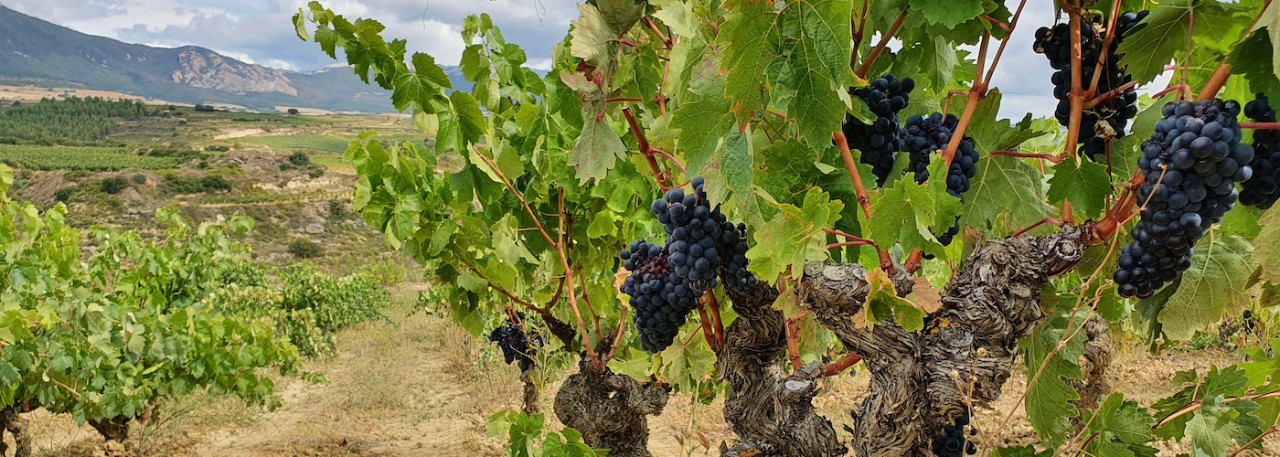.png.transform/rendition-xs/image_image%20(1).png)
New Spanish wine classifications gain momentum
 by Patricia Langton
by Patricia Langton
The intriguingly named Barbas de Liebre (The Hare’s Whiskers) vineyard, owned by Bodegas Palacio, is not only one of Rioja’s oldest vineyards – the vines were planted in 1920 - it was also one of the first the gain the region’s relatively new Viñedo Singular or Single Vineyard (SV) classification. Some 121 Single Vineyards are listed in Rioja’s latest official list*, along with their village or town of origin, and other regions are making a similar move.
Gaining such a classification required quite complex paper work and meeting specific criteria from the vineyard through to tasting the wine in the glass, so why are producers keen to do this? Bodega Palacio’s winemaker Roberto Rodríguez believes that the SV classification draws attention to “the exceptional and unique qualities of the vineyard”. He adds: “Highlighting the value of specific vineyards has been long overdue in Spain, the French are years ahead of us.”Located in the Laguardia district of the Alavesa, the vineyard is mainly planted to Tempranillo and Viura and situated on terraced slopes featuring calcareous clay soils with a hill shading it from strong afternoon sun to the west. The plan is to launch both a red and white wine under the Cosme Palacio label from recent vintages which are currently ageing in its cellars. Rodríguez hopes that SV status “grants them the prestige they deserve and the distinctive quality that wine enthusiasts and collectors are looking for”.
Over at Baños de Río Tobia in Rioja Alta Juan Carlos Sancha has also gained SV status for his Cerro La Isa vineyard. The wines, a red Garnacha – a prominent variety in Rioja’s oldest vineyards - and white Garnacha Blanca, Viura and Malvasía blend can already be found in Spain and overseas (both around €44 for the 2018 vintage).

In the UK wine merchant Woodwinters lists both of them and the team there is firmly behind the VS concept supporting the wines with virtual seminars between Sancha and its customers. Speaking on behalf of Woodwinters Steven Whitbread says: “Rioja has lots of old vineyards and it makes sense to showcase vineyards of this quality. Rioja has been all about the length of time in the cask and cross-regional blending so VS wines are a novelty and eye-opening for customers.” Attracting interest, especially at the top end of the scale, has been precisely the reason for rolling out a classification for Single Vineyard Cava wines under the Cava de Paraje Calificado label. To date there are in the market from six producers: Alta Alella, Codorniu, Juve & Camps, Pere Ventura, Vins el Cep and Vins Família Ferrer with price tags starting at around €60.
Richard Bigg of London’s Camino restaurants favours the move: “I have tried a number of them and they are truly stunning… I think it’s a good idea, as it helps raise people’s awareness of how brilliant the quality of Cava can be.” With retail prices at around €60 this category is as yet a small niche but it will hopefully help Cava to compete more effectively in the sparkling wine market over time.
Village wines waiting in the wings...
The VS concept is not the only recent change in Spanish wine classifications, it has run alongside the move to designate towns and villages on very similar lines to some of the most famous European regions and notably France’s Burgundy. The Catalan region of Priorat rolled out the first phase of a complex scheme back in 2005 with Vi de Finca and Vi de Vila classifications and recently included a SV Vi de Paratge as well as the top Gran Vinya Classificada with Álvaro Palacios' L’Ermita being one of the small number of wines with the latter classification.

Even in DO regions which have emerged in more recent times and those with more challenging climates there is enthusiasm for similar schemes. Bierzo, located at the north-western tip of Castile and León and bordering Galicia, is keen to put villages and locations on the map with both the Vinos de Villa and Vinos de Paraje classifications. Indeed giving the nature of this DO which, like Priorat, tends to feature small vineyard holdings and a rich variety of locations, the move arguably makes good sense having put its flagship red grape Mencía on the wine map.
Here Losada Vinos de Finca has played an important role in defining the new style of Bierzo wines with winemaker Amancio Fernández at the helm. Turning to the region’s new classifications, the bodega is now backing both horses with one Vino de Paraje – Altos de Losada La Bienquerida - and two Vino de Villa wines – Villa de San Lorenzo and Villa de Valtuille de Arriba - already in the market. Fernández is keen to point out that gaining the official classifications are far more relevant for marketing the wines as he explains: “We were already working along these lines in the bodega – our winemaking hasn’t changed – the classifications are geared to help the consumer to discover the diversity on offer.”
Regions to watch
Expect to see similar schemes from other Spanish regions and in the near future. Navarra, Rioja’s neighbour, could be one. According to Elena Arraiza at the Consejo Regulador: “A strategic analysis is under way in DO Navarra to consider a possible classification.” Could Ribera del Duero be a likely candidate given the region’s wide variety of microclimates, altitudes and wealth of old vineyards in the heart of Castile and León? The regional authorities are tight-lipped about any plans at the time of writing but Javier Zaccagnini of Sei Solo (and former director at the Regulatory Council) believes that the time is right: “I think that the concept of single vineyard or village wine would be a great development for Ribera del Duero. The region’s great variety of terroir make this very feasible and appealing. There are some villages, such as La Horra or Pesquera, where the wines are recognisable for their distinct personality and higher quality.”

Last but by no means least to Jerez, the home of sherry, where an exciting development is about to be unveiled. According to César Saldaña, president of the Consejo Regulador, a new ‘definitive map’ of the Jerez pagos (SVs) comprising some 100 vineyards of varying sizes is about to get the official stamp of approval. Taking in the entire DO with its three sub-zones of Jerez, El Puerto de Santa María and Sanlúcar de Barrameda, the scheme will enable producers to certify a pago and use its name on their labels. Watch this space...


